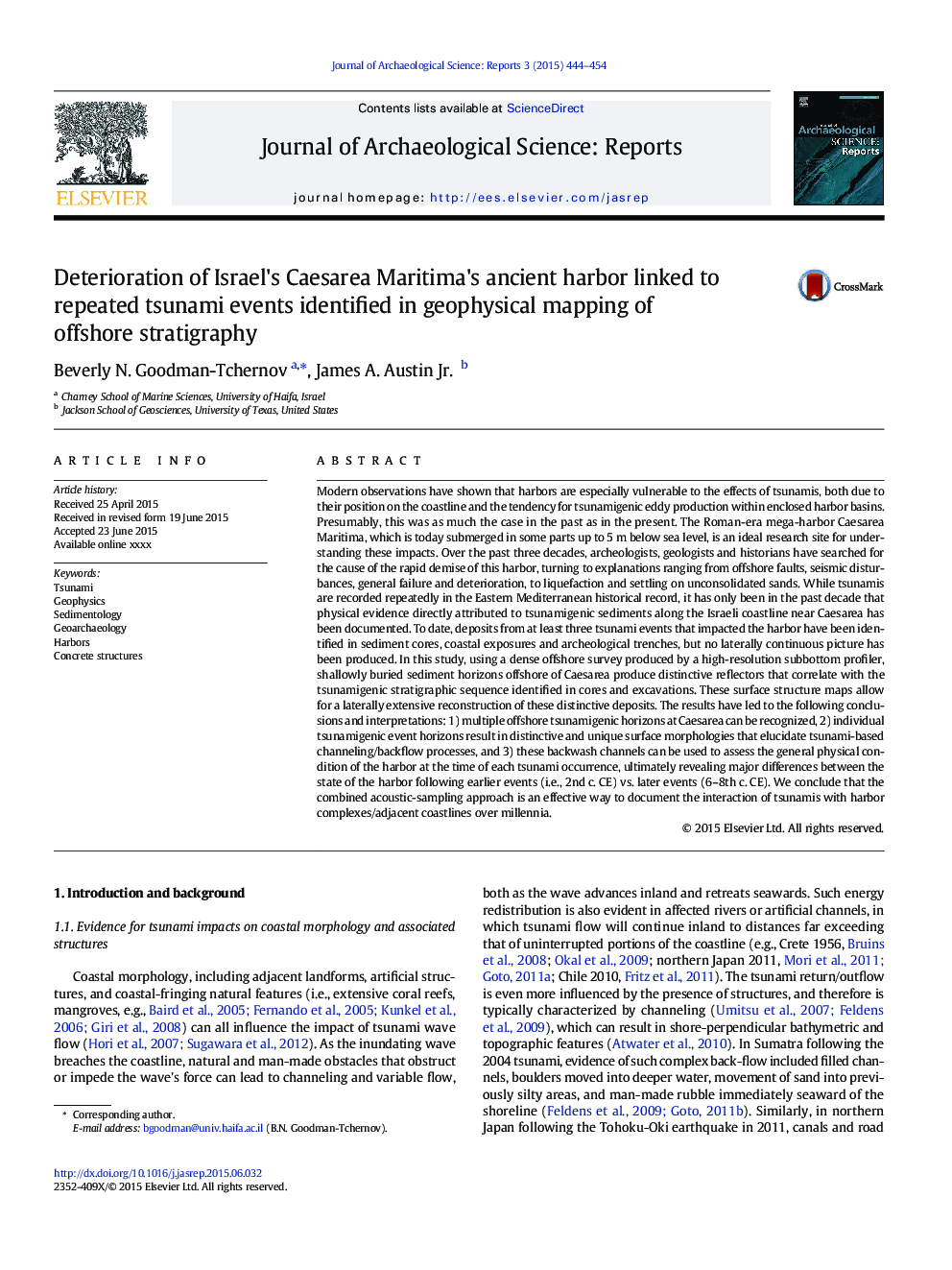| کد مقاله | کد نشریه | سال انتشار | مقاله انگلیسی | نسخه تمام متن |
|---|---|---|---|---|
| 7446582 | 1483940 | 2015 | 11 صفحه PDF | دانلود رایگان |
عنوان انگلیسی مقاله ISI
Deterioration of Israel's Caesarea Maritima's ancient harbor linked to repeated tsunami events identified in geophysical mapping of offshore stratigraphy
دانلود مقاله + سفارش ترجمه
دانلود مقاله ISI انگلیسی
رایگان برای ایرانیان
کلمات کلیدی
موضوعات مرتبط
علوم انسانی و اجتماعی
علوم انسانی و هنر
تاریخ
پیش نمایش صفحه اول مقاله

چکیده انگلیسی
Modern observations have shown that harbors are especially vulnerable to the effects of tsunamis, both due to their position on the coastline and the tendency for tsunamigenic eddy production within enclosed harbor basins. Presumably, this was as much the case in the past as in the present. The Roman-era mega-harbor Caesarea Maritima, which is today submerged in some parts up to 5Â m below sea level, is an ideal research site for understanding these impacts. Over the past three decades, archeologists, geologists and historians have searched for the cause of the rapid demise of this harbor, turning to explanations ranging from offshore faults, seismic disturbances, general failure and deterioration, to liquefaction and settling on unconsolidated sands. While tsunamis are recorded repeatedly in the Eastern Mediterranean historical record, it has only been in the past decade that physical evidence directly attributed to tsunamigenic sediments along the Israeli coastline near Caesarea has been documented. To date, deposits from at least three tsunami events that impacted the harbor have been identified in sediment cores, coastal exposures and archeological trenches, but no laterally continuous picture has been produced. In this study, using a dense offshore survey produced by a high-resolution subbottom profiler, shallowly buried sediment horizons offshore of Caesarea produce distinctive reflectors that correlate with the tsunamigenic stratigraphic sequence identified in cores and excavations. These surface structure maps allow for a laterally extensive reconstruction of these distinctive deposits. The results have led to the following conclusions and interpretations: 1) multiple offshore tsunamigenic horizons at Caesarea can be recognized, 2) individual tsunamigenic event horizons result in distinctive and unique surface morphologies that elucidate tsunami-based channeling/backflow processes, and 3) these backwash channels can be used to assess the general physical condition of the harbor at the time of each tsunami occurrence, ultimately revealing major differences between the state of the harbor following earlier events (i.e., 2nd c. CE) vs. later events (6-8th c. CE). We conclude that the combined acoustic-sampling approach is an effective way to document the interaction of tsunamis with harbor complexes/adjacent coastlines over millennia.
ناشر
Database: Elsevier - ScienceDirect (ساینس دایرکت)
Journal: Journal of Archaeological Science: Reports - Volume 3, September 2015, Pages 444-454
Journal: Journal of Archaeological Science: Reports - Volume 3, September 2015, Pages 444-454
نویسندگان
Beverly N. Goodman-Tchernov, James A. Jr.,